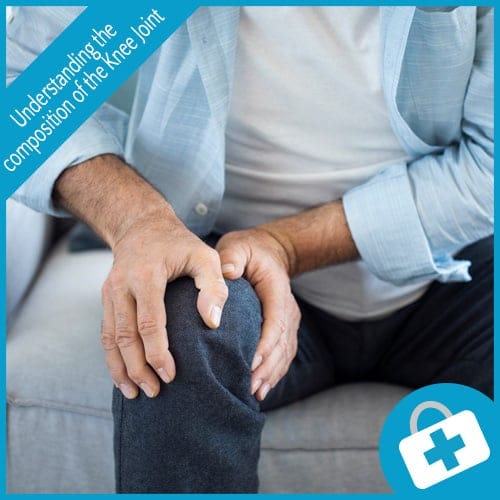Understanding the Composition of the Knee Joint
 While we have written a variety of in-depth posts about specific injuries, treatments and operations performed by Warrington specialist knee surgeon, Mr. Gareth Stables, it’s about time that we took a proper look at the composition of the knee joint. Understanding the components of the knee and surrounding structures can help you prevent knee injuries and perhaps notice possible symptoms early-on.
While we have written a variety of in-depth posts about specific injuries, treatments and operations performed by Warrington specialist knee surgeon, Mr. Gareth Stables, it’s about time that we took a proper look at the composition of the knee joint. Understanding the components of the knee and surrounding structures can help you prevent knee injuries and perhaps notice possible symptoms early-on.
Below is a full break down provided by Warrington Specialist Knee Surgeon , Mr. Gareth Stables, of the knee joint’s bones, tendons, and surrounding muscles. Keep reading to understand how all these components work together in forming one of the most-used and complex joints in our body.
Breaking Down the Largest Joint in the Body
The knee joint is that largest joint in the human body and is actually comprised of two joints, the tibiofemoral joint, and the patellofemoral joint. Acting as a modified hinge joint, the knee specialises in flexion and extension with small amounts of rotation possible as well.
The knee joint is a meeting of three different bones, the femur (thigh bone), patella (knee cap) and tibia (shinbone). While the patella is formed from cartilage at birth, it ossifies (becomes bone) between the ages of three to five years, and plays a truly essential part in the knee joint’s function allowing you to straighten your knee more efficiently.
Looking at Ligaments Around the Knee
The ligaments around your knee have an essential role in stabilising your joint by limiting movements and protecting more delicate areas of the knee joint. Any Warrington specialist knee surgeon, Mr. Stables, explains “there are two main types of ligaments, intracapsular (ligaments located inside the articular capsule) and extracapsular (ligaments located outside the articular capsule).”
“The cruciate ligaments are the intracapsular ligaments. You have two cruciate ligaments, the ACL (anterior cruciate ligament) and the PCL (posterior cruciate ligament). The extracapsular ligaments include the MCL (medial collateral ligament) and LCL (lateral collateral ligament) as well as the MPFL (medial patello-femoral ligament) which tethers your kneecap to your thigh bone.
The Muscular Movers of the Knee Joint
A number of leg muscles are involved in the knee joint’s functions, the biggest movers of the knee joint can be found on the front and back of the thigh. These are the hamstrings and the quadriceps muscles which are used for flexion and extension correspondingly.
There are a few other muscles which influence the knee joint. These include the articularis genus and muscles like the gastrocnemius and plantaris that make up some of the the calf musculature.
Contact your Warrington Specialist Knee Surgeon Today
If this brief introduction to the composition of the knee joint has you interested in learning more, our website and blogs are a treasure trove of important information about all things knee related. Our Warrington specialist knee surgeon has years of experience and is specially trained when it comes to knee problems and treatments.
For any information about knee injuries or knee surgery, contact us via our website or call us at 0161 464 6399.

